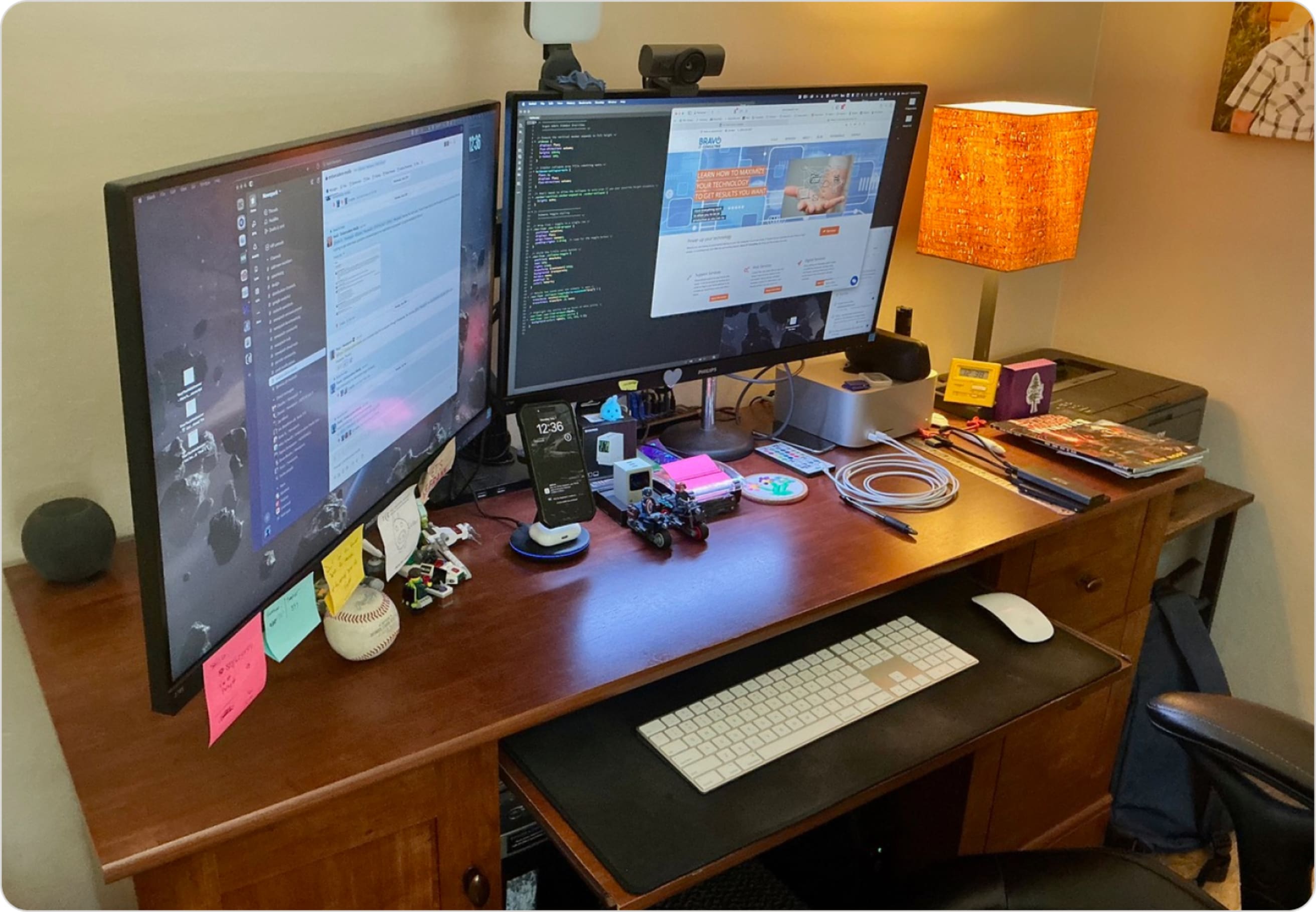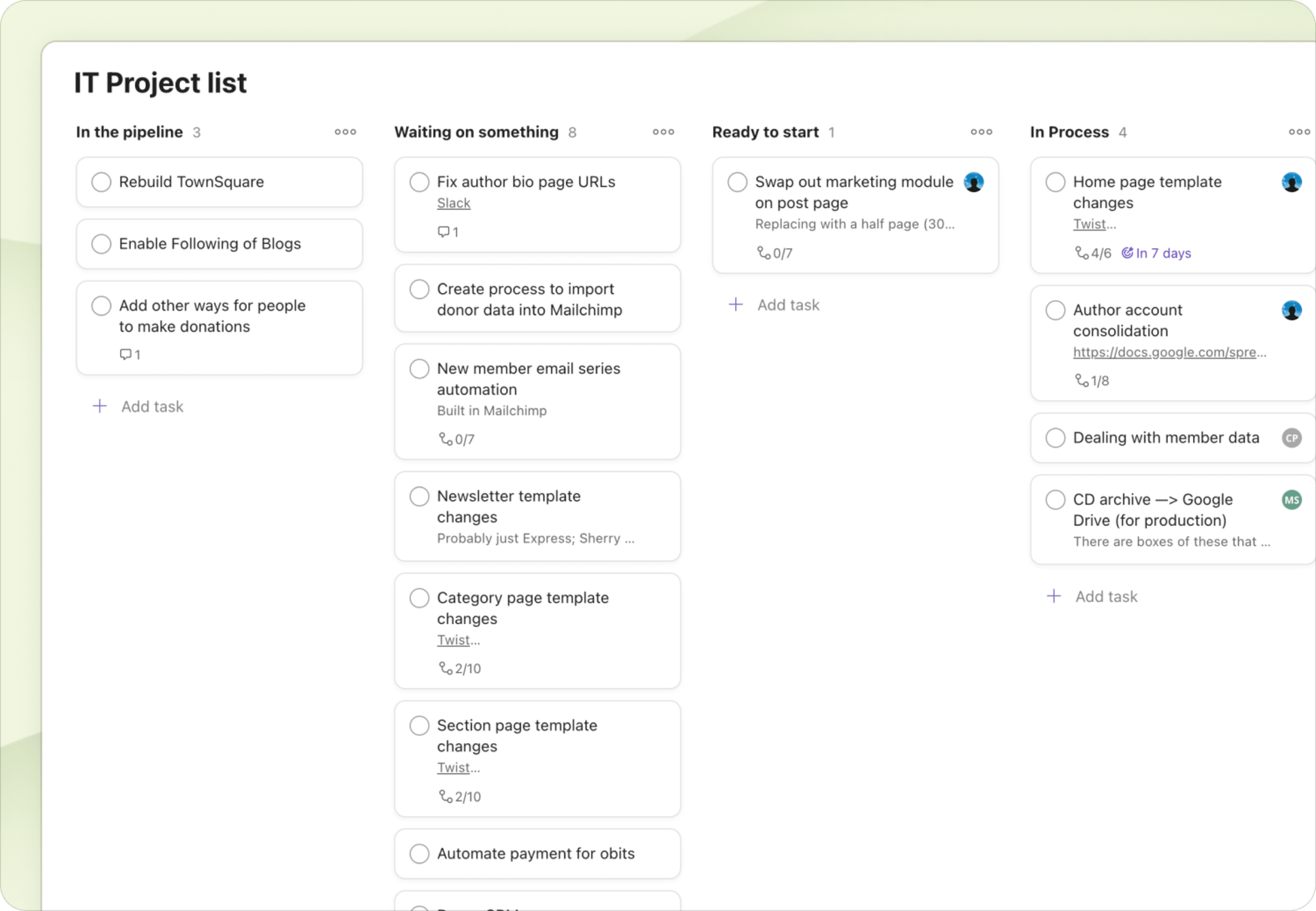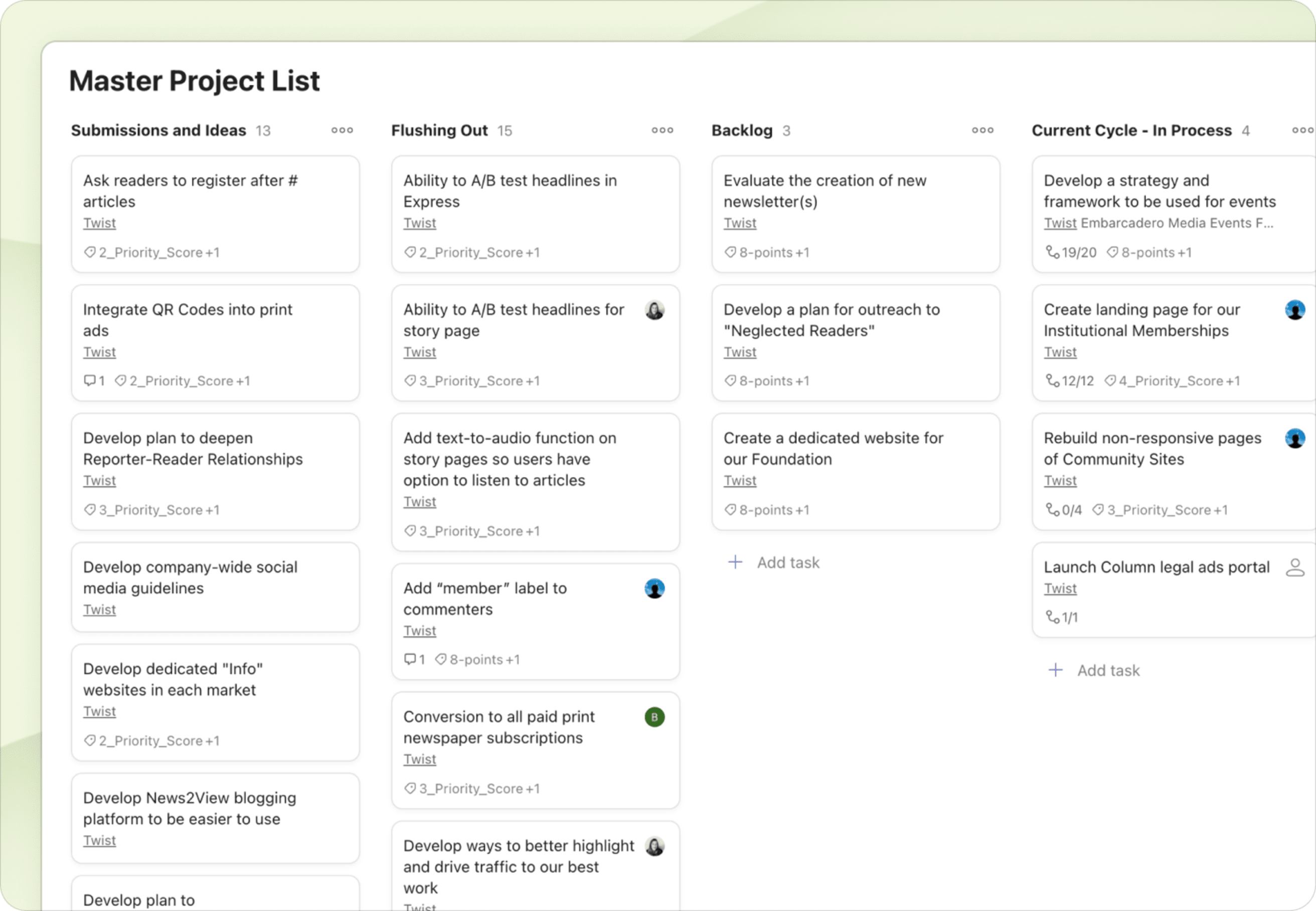Editor's Note: Since publication, Frank has transitioned to a new role as Chief Technology Officer at Pro Legal Funding, where he continues to use Todoist every day.
For twelve years, Frank Bravo has started each workday the same way: opening Todoist to see what actually needs to get done. As Chief Technology Officer at Embarcadero Media, he oversees the technology infrastructure for a nonprofit media company that's been serving the San Francisco Bay Area for over three decades. But his journey to this simple morning ritual wasn't always so straightforward.
Like many tech leaders at growing companies, Frank once found himself trapped in a maze of enterprise project management tools that promised efficiency, but delivered complexity. His journey from tool fatigue to consistent daily use shows what's possible when teams choose simplicity.
The morning reality check
Frank starts his mornings early, well before most of his colleagues have had their first coffee. His days begin with a familiar ritual: checking what actually needs to get done today.
"I was using things like Basecamp and I had a client who was using Jira," Frank recalls. "But every time I just needed a simple reminder, I had to log into multiple systems and create multiple entries. I was spending all my time tracking instead of doing."

When "industry standard" becomes a burden
With 32 years under his belt at the organization, Frank has seen every flavor of project management software come through their doors. They all promised to revolutionize how teams work together, but each one demanded its own training manual, workflows, and way of thinking about work.
The breaking point came when Frank realized his three-person tech team was drowning in complexity. Between client requirements, internal tools they'd built, and various project management systems, they were spending more time managing tools than doing actual work. "Jira and Basecamp just caused way too much overhead, in my opinion."
Using project management tools in general tends to mean using a lot of time managing the tool as opposed to actually getting work done.
He needed a change. Not another enterprise solution, but a fundamental rethink of how his team managed work. Meanwhile, at home, Frank's son had discovered something different. "My older son, who was in high school at the time, stumbled across Todoist and introduced me to it. 'Dad, I think this is exactly what you're looking for,' he said, and I've used it ever since."
The experiment that stuck
Frank started solo, testing whether this seemingly simple tool could handle the complexity of his CTO responsibilities.
What made Todoist stand out was its fundamental simplicity. "At the end of the day, you can use it as a true to-do list, and it works very simply," Frank says.
Behind that simplicity, though, was surprising depth. Within weeks, Frank had integrated his calendars, organized his projects, and created a workflow that actually worked with his brain instead of against it. "Now I basically tell everybody that if it's not in Todoist, it doesn't exist. Because I just have way too many things that are going on in my head at any one time."
But the real test came when he introduced it to his team.
From resistance to revelation
"They were resistant at first," Frank admits. The team had invested time building their own internal project management tool that was doing what they needed. Why switch to something new?
The breakthrough came through integration, not replacement. "I convinced them they could create their own projects to track individual tasks while still collaborating on shared projects with the team. But what really sold it was integrating our ticketing system."

The workflow they built was elegantly simple: by forwarding emails from their ticketing system to Todoist, support tickets automatically become tasks for the assigned team member. No manual entry, no duplicate tracking. Their recurring maintenance tasks, individual projects, and customer support tickets all flowed into one unified system.
But the most valuable change came as a surprise: team transparency. "I hadn't thought about it at the time, but the ability for all of us to know what each other's working on was a big upside," Frank says.
The multiplication effect
What started as one CTO's quest for morning sanity rippled throughout Embarcadero Media. "I believe our marketing team uses it pretty extensively," Frank notes, though organizational changes have affected adoption in other teams.
And the impact has been lasting. Twelve years after his son's recommendation, Frank and his core team still rely on Todoist daily. The ticketing integration alone processes dozens of requests weekly, each one automatically organized, assigned, and tracked without anyone having to think about project management methodology.
Todoist gives my colleagues the visibility they need to trust that things are getting done.
The real cost of complexity
With three decades in tech leadership and a consulting business on the side, Frank understands when complexity is necessary.
Reflecting on his experience with a client using Jira, he states plainly: "Unless you're a Fortune 100 company, it really doesn't make sense to use something like Jira. It's just way too much information in one place."
He shares another recent example: "I have a client using Monday because an employee had used it before. But they're just creating projects and adding tasks—no Gantt charts, no resource planning. That's a lot of overhead for something simpler tools can handle."

Lessons for growing teams
Frank's advice for other small to medium-sized businesses is refreshingly direct: "Whatever you’re using to manage tasks is probably more complicated than it needs to be. Something like Todoist can do 99% of the things you need without the overhead."
For teams considering Todoist, Frank offers three key recommendations:
Create your projects – "If you don't have good organization, it's gonna be just a junk drawer of tasks."
Use a calendar integration – "Connect your personal calendar and your organization’s calendar so you can assign things to days and times."
Leverage labels – "Use labels to track status and categorize your work."
Finding clarity in simplicity
Today, Frank's mornings look nothing like they did before Todoist. No multiple logins. No updating project statuses across different systems. No managing the management tool. Just a clear view of what needs to get done, shared transparently with his team.
If it’s not in Todoist, it’s not getting done.
For a CTO who's seen every project management trend come and go over three decades, choosing simplicity isn't just a workflow preference. It's a philosophy that's proven its worth through twelve years of consistent daily use.
The lesson for other growing teams is clear: complexity isn't a sign of sophistication. Sometimes the most powerful solution is the one that gets out of your way and lets you focus on the work that actually matters.
Ready to simplify your team's workflow? Discover how Todoist can transform your team's productivity without the complexity. Start with a free trial and see why teams like Embarcadero Media have made the switch to simple, powerful task management that actually works. Learn more about Todoist for Teams

